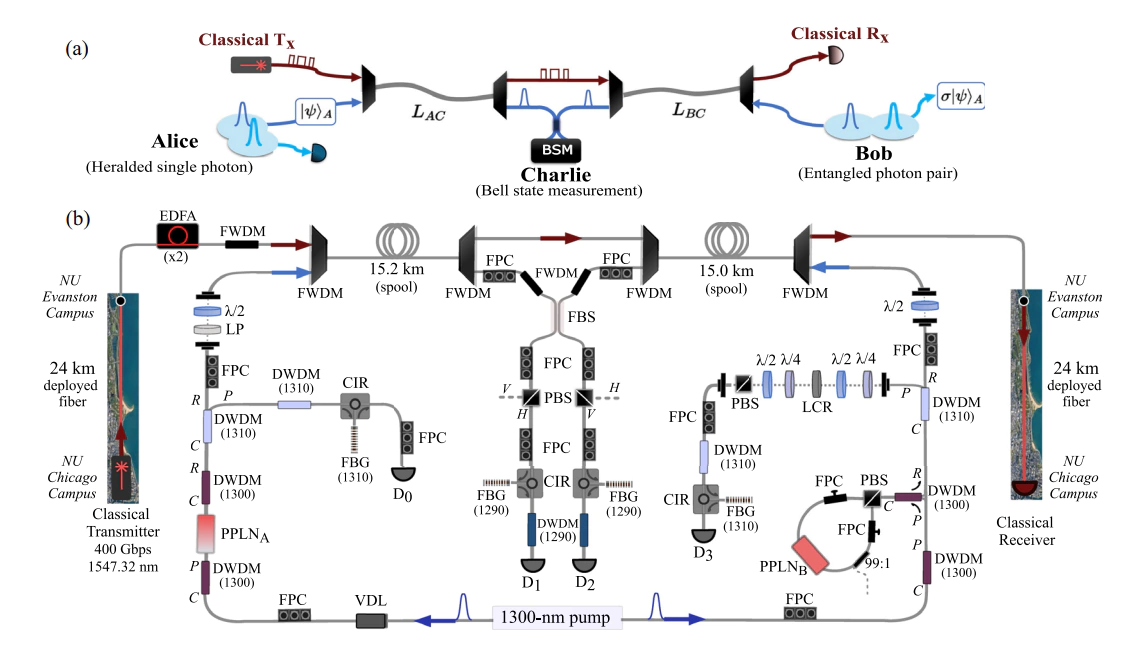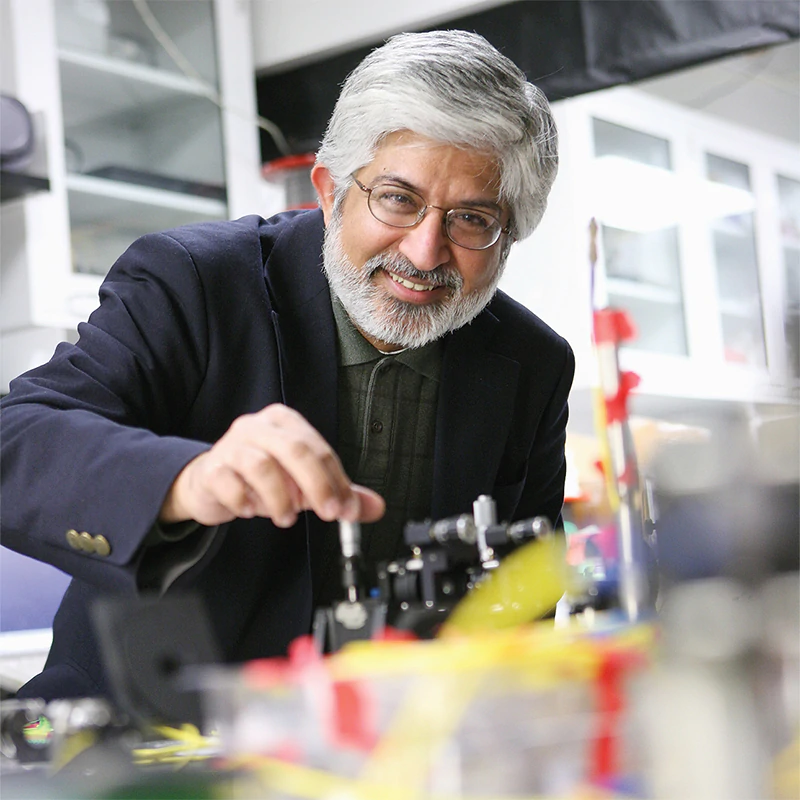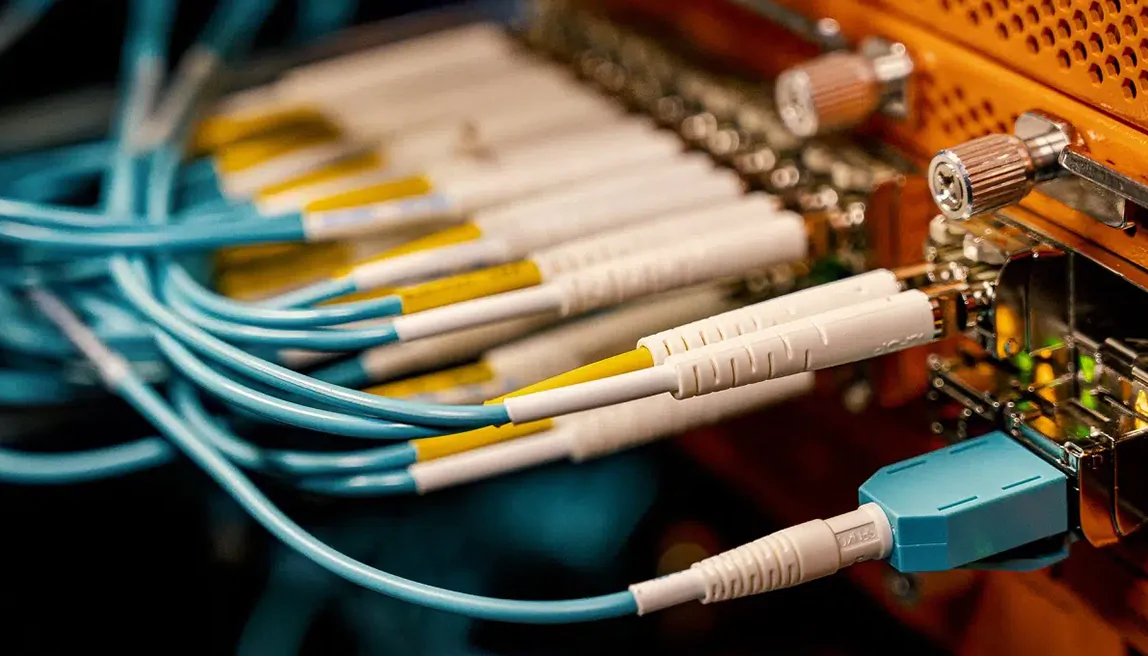Quantum technology is regarded as the next frontier of technology.
With its ability to possible shape the next big leap in computing, communication, and cryptography, the technology uses qubits, which can exist in superposition—being both 0 and 1 at the same time. Unlike classical computers that use bits (0 or 1), quantum computers should be a lot faster than even the most powerful classic supercomputers.
This is because qubits allow quantum computers to perform complex calculations at speeds that are unimaginable with today’s technology.
And this time, an engineering team at Northwestern University has achieved a significant milestone in quantum technology, successfully demonstrating quantum teleportation over fiber optic cables already carrying internet traffic.
This groundbreaking achievement, published in the journal Optica, paves the way for integrating quantum communication with traditional internet networks, potentially ushering in a new era of ultra-secure, high-speed data transmission.

"This is incredibly exciting because nobody thought it was possible," said Northwestern’s Prem Kumar, who led the study.
"Our work shows a path towards next-generation quantum and classical networks sharing a unified fiber optic infrastructure. Basically, it opens the door to pushing quantum communications to the next level."
Quantum teleportation leverages the phenomenon of quantum entanglement, allowing information to be shared between distant network users without the physical transfer of particles.
This process offers unparalleled levels of speed and security, as the entangled particles enable instantaneous data exchange over vast distances.
The successful integration of quantum signals with existing internet infrastructure signals a major leap forward, suggesting that quantum and classical networks could soon coexist, enhancing global communication networks.
Beyond communication, this advancement holds significant implications for the development of advanced sensing technologies and quantum computing applications, reinforcing the potential for transformative progress across various industries.
Quantum teleportation introduces the potential for an ultra-fast, highly secure method of sharing information between distant network users—without the need for direct transmission.
The process relies on quantum entanglement, a phenomenon where two particles become intrinsically linked, regardless of the physical distance separating them. When one particle is altered, the state of its entangled counterpart changes instantaneously. This allows information to be exchanged across great distances without the particles themselves physically traveling, offering a revolutionary alternative to traditional data transfer methods.
By eliminating the need for direct transmission, quantum teleportation could redefine the future of communication, enabling faster, more secure networks that seamlessly integrate with existing internet infrastructure.
“In optical communications, all signals are converted to light,” Kumar explained. “While conventional signals for classical communications typically comprise millions of particles of light, quantum information uses single photons.”
“By performing a destructive measurement on two photons — one carrying a quantum state and one entangled with another photon — the quantum state is transferred onto the remaining photon, which can be very far away,” further explained Jordan Thomas, a Ph.D. candidate in Kumar’s laboratory and the paper’s first author.
“The photon itself does not have to be sent over long distances, but its state still ends up encoded onto the distant photon. Teleportation allows the exchange of information over great distances without requiring the information itself to travel that distance.”

Before Kumar’s team groundbreaking study, many researchers doubted whether quantum teleportation could occur over fiber optic cables already brimming with classical internet traffic.
What they all know is that, the internet is too noisy, and that photos are very sensitive to disruption.
The prevailing belief was that, the delicate entangled photons would be overwhelmed by the sheer volume of light particles—akin to a fragile bicycle attempting to navigate through a tunnel crowded with speeding trucks.
Kumar and his team managed to achieve the milestone by devising a solution to shield these photons from the heavy flow of data.
By thoroughly analyzing how light scatters within fiber optic cables, the researchers identified a less congested wavelength to position their photons. To further minimize interference, they incorporated specialized filters to dampen noise from standard internet traffic.
"We carefully studied how light is scattered and placed our photons at a judicial point where that scattering mechanism is minimized," Kumar said. "We found we could perform quantum communication without interference from the classical channels that are simultaneously present."
To validate their approach, the team demonstrated it by installing a 30-kilometer-long fiber optic cable, positioning photons at each end.
They then transmitted both quantum information and high-speed internet traffic through the same cable. At the receiving end, they measured the integrity of the quantum information after executing teleportation protocols by performing quantum measurements at the midpoint. The results confirmed that the quantum data successfully arrived intact—despite the bustling classical traffic sharing the cable.
"Although many groups have investigated the coexistence of quantum and classical communications in fiber, this work is the first to show quantum teleportation in this new scenario," Thomas said. "This ability to send information without direct transmission opens the door for even more advanced quantum applications being performed without dedicated fiber."

For his next step, Kumar and this team aim to expand this experiments over greater distances, pushing the boundaries of quantum teleportation.
In the next phase, his team plans to utilize two pairs of entangled photons—rather than just one—to demonstrate entanglement swapping, a critical step toward enabling distributed quantum networks.
Kumar’s team is also exploring the feasibility of conducting these experiments using real-world underground fiber optic cables, moving beyond the controlled environment of lab spools. This shift could mark a pivotal moment in transitioning quantum teleportation from theory to practical application.
Despite the challenges ahead, Kumar remains optimistic.
"Quantum teleportation has the ability to provide quantum connectivity securely between geographically distant nodes," Kumar said.
"But many people have long assumed that nobody would build specialized infrastructure to send particles of light. If we choose the wavelengths properly, we won’t have to build new infrastructure. Classical communications and quantum communications can coexist."
It's worth mentioning that the first-ever quantum teleportation made on a computer chip was achieved in 2013.
